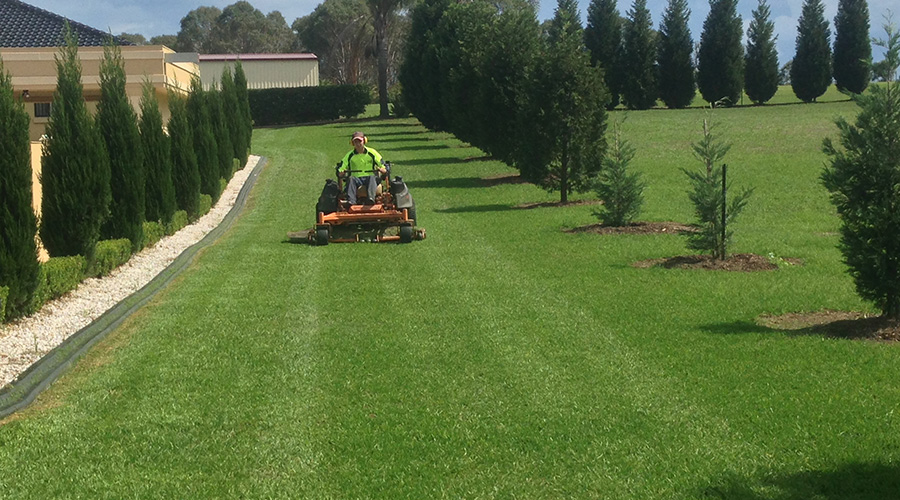
The secret to a good lawn is not to mow it too short, and we never remove more than one third of the height of the lawn when it is mowed. Mowing too often can weaken its structure. Weeds are a problem in most lawns at some point or another and can be removed by hand or applying a selective lawn herbicide – products that will kill the weeds but not the grass.
To have a healthy lawn, we could feed it for you. Fertilising will help to make the grass look greener as well as strengthen the lawn against diseases, patchiness, moss and weeds.
Many people think that lawns require a lot of water but if you do not mow it too short, you can reduce the amount of water it needs. Reduce the water requirements even further by applying a wetting agent to the lawn and keep it well aerated.
If your lawn feels “spongy” underneath your feet, you may have a thatch build up – thatch being the layer of dead grass that lies at the base of the lawn. This needs to be removed as it stops air and water from getting to the root system of the lawn and can also cause fungal disease.
Lawns may also become compacted over time and will need to be aerated. Aeration can be done using a corer, hollow tine machine, or simply a garden fork.
Other lawn care problems include Algae – usually a symptom of a poorly drained lawn, Lichen – flat and leaf-like in shape are a symptom of depleted soil and too much shade, Urination from domestic pets.